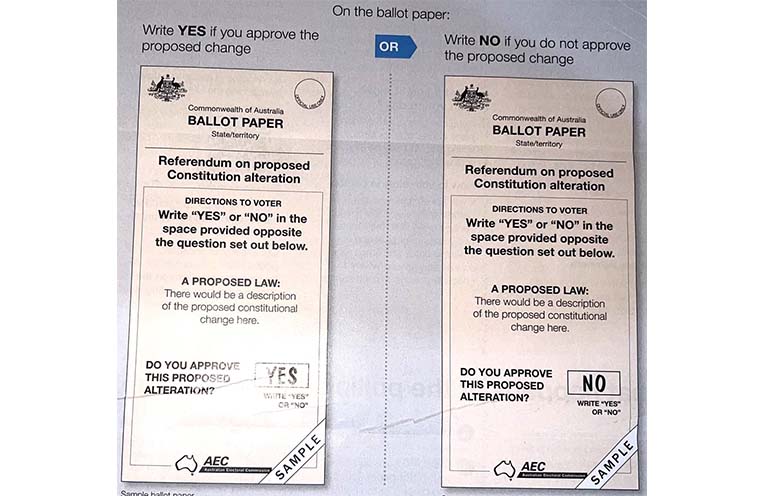
THE Australian Electoral Commission (AEC) has been coming under considerable scrutiny from the ‘No’ campaign for the Voice to Parliament.
Last week, it took the very uncommon step of publicly refuting claims by ‘No’ campaigners, including Federal Opposition Leader Peter Dutton, that the voting process will be “rigged”.
 Advertise with News of The Area today.
Advertise with News of The Area today.It’s worth it for your business.
Message us.
Phone us – (02) 4981 8882.
Email us – media@newsofthearea.com.au
“The AEC completely and utterly rejects the suggestions by some that by transparently following the established, public and known legislative requirements, we are undermining the impartiality and fairness of the referendum,” the AEC said in a statement.
The voting instructions have been made very clear – there will be one box on the referendum ballot and voters are required to express their wishes with either Yes or No.
The criticism arose with the suggestion that a ‘Y’, an ‘N’ or even a tick will count as a valid vote, but a cross (X) will not, because it is construed as ambiguous.
This was hit with a wave of commentary from No campaigners, much of which, according to the AEC, is factually incorrect and ignores the law surrounding ‘savings provisions’, the longstanding legal advice regarding the use of ticks and crosses, and the decades-long and multi-referendum history of the application of that law and advice.
Like an election, the Referendum (Machinery Provisions) Act 1984 includes ‘savings provisions’ – the ability to count a vote where the instructions have not been followed but the voter’s intention is clear.
“The law regarding formality in a referendum is long-standing and unchanged through many governments, Parliaments, and multiple referendums,” the AEC suggests.
“Legal advice from the Australian Government Solicitor, provided on multiple occasions during the previous three decades, regarding the application of savings provisions to ‘ticks’ and ’crosses’ has been consistent – for decades.
“This is not new, nor a new AEC determination of any kind for the 2023 referendum.
“The law regarding savings provisions and the principle around a voter’s intent has been in place for at least 30 years and six referendum questions.”
The longstanding legal advice provides that a cross can be open to interpretation as to whether it denotes approval or disapproval.
For example, many people use a cross to indicate approval in checkboxes on forms.
The legal advice provides that for a single referendum question, a clear ‘tick’ should be counted as formal and a ‘cross’ should not.
Mr Dutton has claimed that a cross (X) always indicates ‘No’, but at least two documents have surfaced that show he has used crosses to indicate ‘Yes’ when filling out forms.
The Australian Border Force, an agency which Mr Dutton formally oversaw, also requires people entering Australia to use a cross to indicate ‘Yes’ on customs declarations.
A number of commentators have condemned the AEC’s critics, accusing them of importing ‘Trump-style’ tactics to undermine the process while many others have pointed out that the AEC’s current procedures have been in place since John Howard was Prime Minister.
By Andrew VIVIAN
